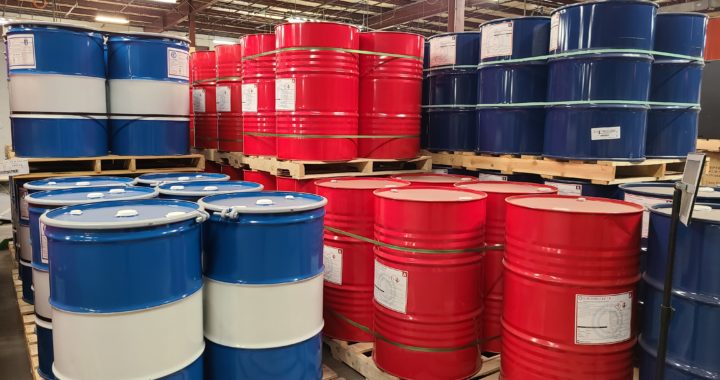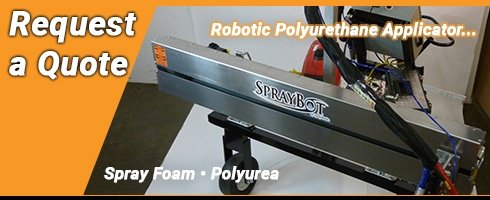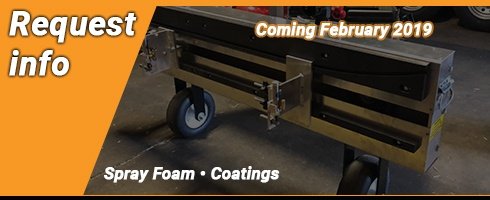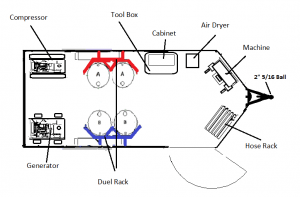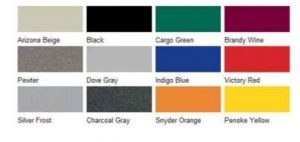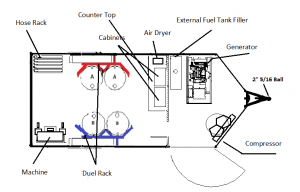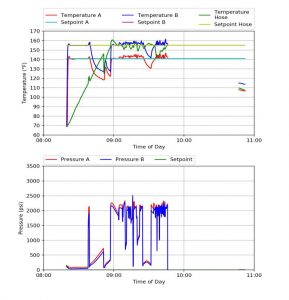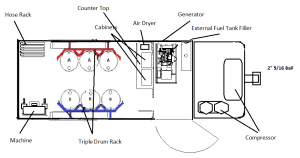Spray foam material is packaged, sold and shipped on the basis of weight. Therefore, in order to figure the volume of a product packaged in the drum, converting the weight of the product within the drum into gallons is required. To do so, the specific gravity or weight per gallon of material is required information. There is likely to be a difference between manufactures, so confirm with the product supplier to provide this info or if a scale is available, weigh the container first. Specific Gravity and per gallon weight of the liquid for some manufactures are provided on the SDS or product data sheet (formerly MSDS).
Continue reading
Category Archives: Blogs
SPF Equipment Company Launches New Store
SprayWorks Offers a More User-friendly Online Store
SprayWorks Equipment Group has launched a new online store. Complete with a fully responsive website to help with consistency between different devices and a fully searchable mobile view. In addition to the new store, SprayWorks is also offering special discounts to celebrate.
Continue reading
7 Benefits of Polyurethane Foam Roofing
Benefit #1: History Proves It
Since its development in 1955, Spray Polyurethane Foam (SPF), has revolutionized the way designers approach energy efficiency in building envelope design- making SPF one of the top choices among builders.
Continue reading
Part 2: Check-listing to Save the Job and your Sanity
Last month we discussed the daily check points that should take place before and when arriving at the job. This month, the focus is on-going checklists that should take place less frequently, but consistently. We’ve prepared weekly, monthly, semi-annual, annual and quarterly maintenance inspection lists.
Continue reading
How to Spray Foam a Roof
Beyond having a qualified Spray Mechanic – spray foam roof insulation starts with manufacturing guidelines defined by the material supplier, equipment manufacturer, industry standards, and variables that change from project to project. Below are some of the primary needs as you approach adding spray foam roofing systems to your next project.
Continue reading
Manufactured for Roofing
The Magnificent Membrane
The manufacturing and installation of low slope- polyurethane foam membranes (LS-SPF) takes place simultaneously, resulting in an emphasis is on manufacturing and processing controls. LS-SPF systems are formed by the resulting reaction created between mixing two liquid chemical components “A” and “B” while spraying to a prescribed substrate. The two liquids are packaged in individual containers, usually 55 gallon drums. The set, containing 500 lbs of Resin-“B” component and 500 to 550 lbs. Iso-“A” – are sold by the pound. They are processed in a 1:1 mix ratio or mixed equally in parts by means of plural component airless spray. Similar to airless spray painting and coating applications, the two materials are kept separate just prior to spray applying to the prepared surface. From the drums, the two liquid components are displaced or transferred equally from their individual containers to a processing machine called a proportioning unit for its ability to place both products under relatively equal pressure (proportioned equally). The proportioning unit is equipped with individual pumps and heaters that places the components under “prescribed” relatively equal, pressure (1000-2000 psi) and heat (110 to 160 degrees f).
Air Barrier Association Conference & Trade Show
Visit our booth #37 from April 18-20, 2017 in Reston, VA
SprayWorks is heading to Reston, VA! From Tuesday, April 18 through Wednesday, April 19, 2017 – SprayWorks is attending the Air Barrier Association of America Convention and Trade Show. We will be exhibiting at booth #37 in the Hyatt Regency Reston on Tuesday, April 18 from 7:30 am until 4:00 pm and Wednesday, April 19 from 7:30 am until 3:00 pm. Our exhibit booth will feature some of the PMC equipment we offer, along with some featured SprayWorks equipment. Tradeshow attendees will have access to trade show only specials for some of our top equipment and parts.
Continue reading
7 FAQs About Closed Cell Insulation
Considering using closed cell spray foam insulation in your next project? Read these common questions to learn more before you begin.
1. What is Closed Cell Insulation?
Closed cell is a type of spray foam insulation that is denser and more compact in structure than open cell insulation. When the insulation is applied, gas from the blowing agent is trapped in bubbles that form during the curing stage, creating the “closed cell” structure. This helps the insulation to resist liquid and retard vapor.
Continue reading
Part 1: Check-listing to Save the Job and your Sanity
15 Most Important Steps on your Job-site
How many times has the crew shown up for work, got into the vehicle, turned the key on and drove off to the job with your spray foam rig? Every day, right? What about the times you received that dreaded phone call, “the machine or equipment is not working, it was working yesterday” or “we need more parts and can’t work today.” Sound familiar? Implementing some standard procedures and guide lines will help minimize down time and help transform your crew into a professional spray foam production team.
Continue reading
Benefits of Spray-On Rigid Foam Insulation
Spray-on rigid foam insulation is a type of polyurethane that stops the transfer of air between different areas, and is used both residentially and commercially. Because it no longer uses urea formaldehyde or CFCs as a blowing agent, modern spray-foam insulation is environmentally friendly, and is being used more rapidly as an alternative to traditional insulation. One application by a spray foam professional is all it takes to insulate a project, and there are multiple advantages delivered in a short time. If you’re starting a new project and trying to decide which type of insulation is best, you should make an informed comparison. Consider the following benefits of spray-on rigid foam insulation when determining what to use in your next building project.
Continue reading

